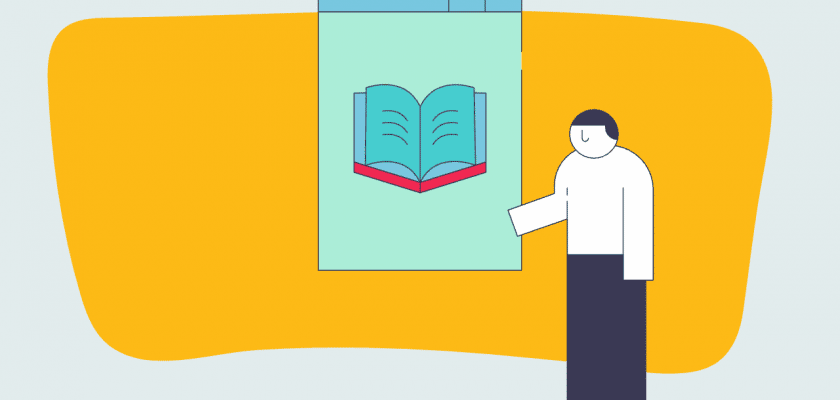‘What happens? Who dunnit? Do they live happily after?’ We’ve all been asked these, or similar, questions. Then, of course, there is that other question: ‘Is it true?’ At this stage, you’ll need to deal with the idea of fiction vs nonfiction texts.
In this post, I’ll take you through what you should look out for if you are creating or choosing fiction vs nonfiction anchor charts.
I’ll also share where you can find useful resources or ideas to create your own anchor charts.
Table of Contents
- What to look out for in a fiction vs nonfiction anchor chart
- You can teach fiction vs nonfiction in different ways
- Find the best resources for teaching fiction vs nonfiction with TeachSimple
- Ideas for creating fiction vs nonfiction anchor charts
- Final thoughts on fiction vs nonfiction anchor charts
What to look out for in a fiction vs nonfiction anchor chart
A good fiction vs nonfiction anchor chart must be set out logically to present the comparison between the two types of text. You’ll see that most charts use columns to do this.
Some anchor charts indicate that fiction and nonfiction texts do have things in common. This is something to work on with the middle and higher grades.
All the elements of both fiction and nonfiction texts must be included in the anchor chart. It’s also effective to use separate charts for fiction and for nonfiction, and a third chart that brings them together.
A good anchor chart will indicate that there are some similarities between fiction and nonfiction. For example, lower grades can be taught that fiction texts have illustrations, and non-fiction texts have photographs and graphics. Higher grades should be taught that there are some fiction texts that are illustrated with photographs and even graphics; and some nonfiction texts have illustrations.
Take note that there are anchor charts that give ‘fantasy content’ as one of the characteristics of fiction. Watch out for this, because there are a lot of fiction texts that are not fantasy, but tell other types of stories.
You can teach fiction vs nonfiction in different ways
I found one blog that has some really great fiction vs nonfiction teaching ideas.
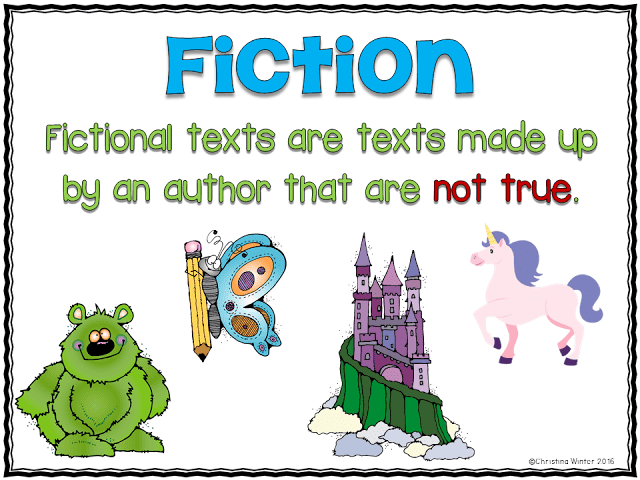
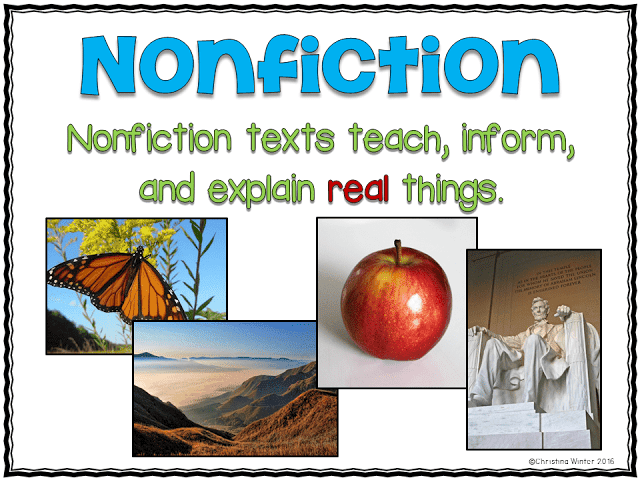
The discussion is around using charts and video to teach the two concepts and then compare them.
Using video in conjunction with anchor charts is a good way to tackle the subject. It draws on something they are familiar with. An anchor chart then becomes reinforcement and an important reference point for the class.
It is effective to depart from the norm and use circular sets with an intersecting section on the fiction vs nonfiction anchor chart. This indicates clearly what fiction and nonfiction have in common.
Find the best resources for teaching fiction vs nonfiction with TeachSimple
Nonfiction vs. Fiction Comparison Anchor Chart by First In Line
This Nonfiction vs Fiction Comparison anchor chart is aimed at grades 1 – 4. It is straightforward and presents the information simply. The image of a book contextualizes the subject for students. The whole resource consists of this anchor chart and some charts that can be filled in by students.
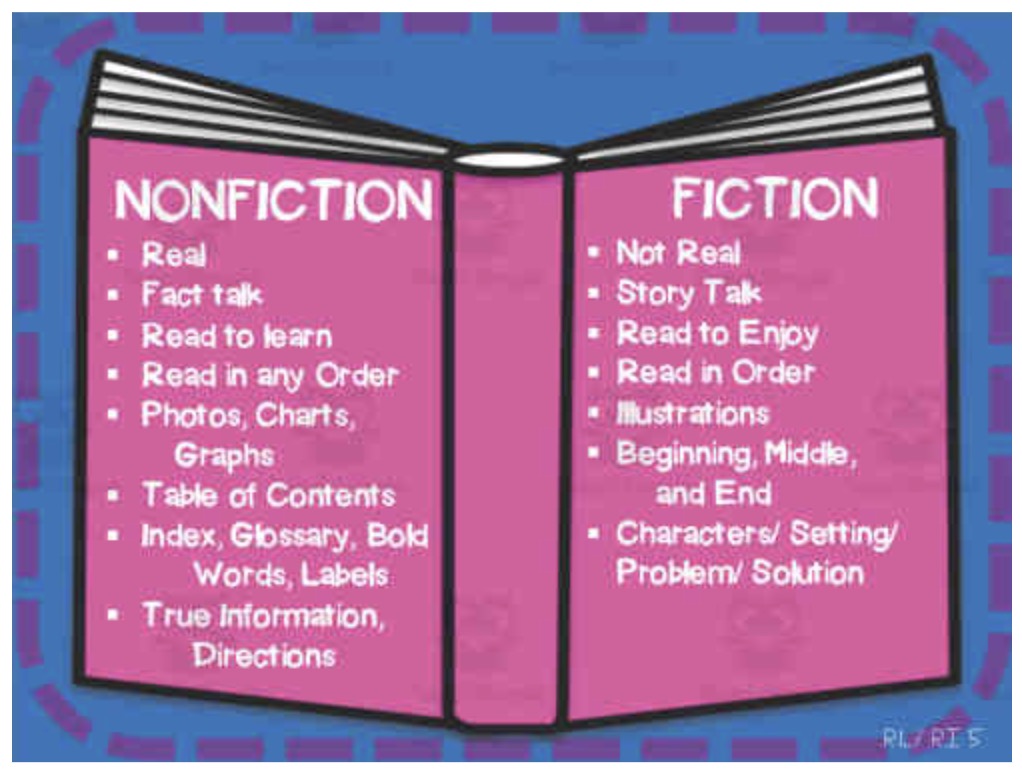
Nonfiction Text Features Anchor Chart by First In Line
This Nonfiction Text Features anchor chart is a great way to teach students about what characterizes different types of nonfiction texts. The resource is aimed at grades 1 – 4. There are 12 charts in total. Some are complete, to serve as examples. Others are interactive and require the students to fill in the blanks.

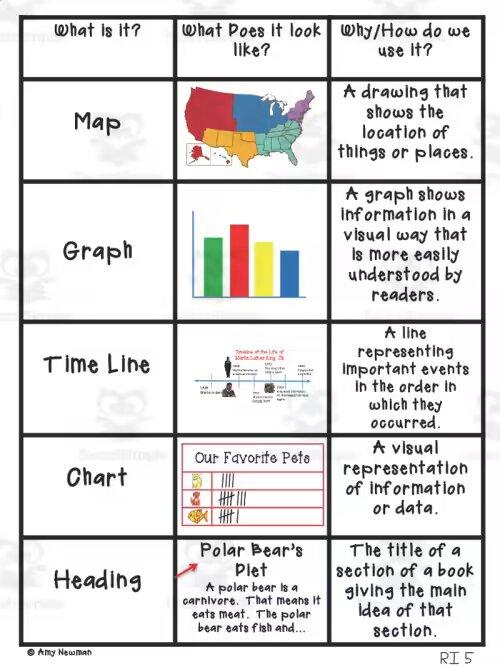

Nonfiction Text Structures Anchor Chart by First In Line
This is an anchor chart on Nonfiction Text Structures, which presents the details comprehensively. The content is color-coordinated, which organizes it for the students. The resource is aimed at grades 1 – 3. It consists of one complete chart and one that is blank, so that students can fill it in.
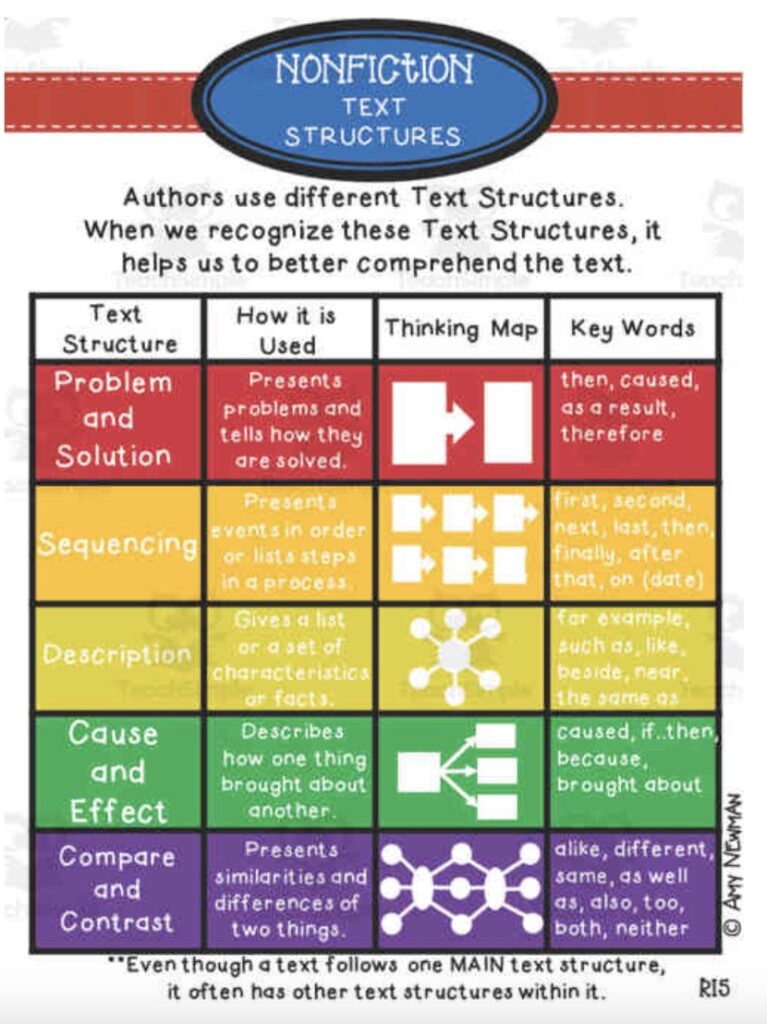
Fiction and Nonfiction Book Report Slideshow by Creatively Mrs. B
This resource is a blueprint for creating a Fiction and Nonfiction Book Report Slideshow. It is aimed at grades 2 – 5, but could easily be used for any grade where the students are writing or creating book reports or book talks. There are two templates, one for fiction and one for non-fiction. Pointed questions indicate to the students what information they need to include in the report.



Fiction Story Retell Anchor Chart by First In Line
This is a simple, but effective resource that uses a Five Finger Retell Fiction approach. The idea is to identify and recall the story elements of a fiction text by using five fingers. It is a perfect chart to display in the class, so it serves as a constant reminder to the students. There are 8 charts, 7 of which are to be filled in by the students from the example of the first, complete chart.
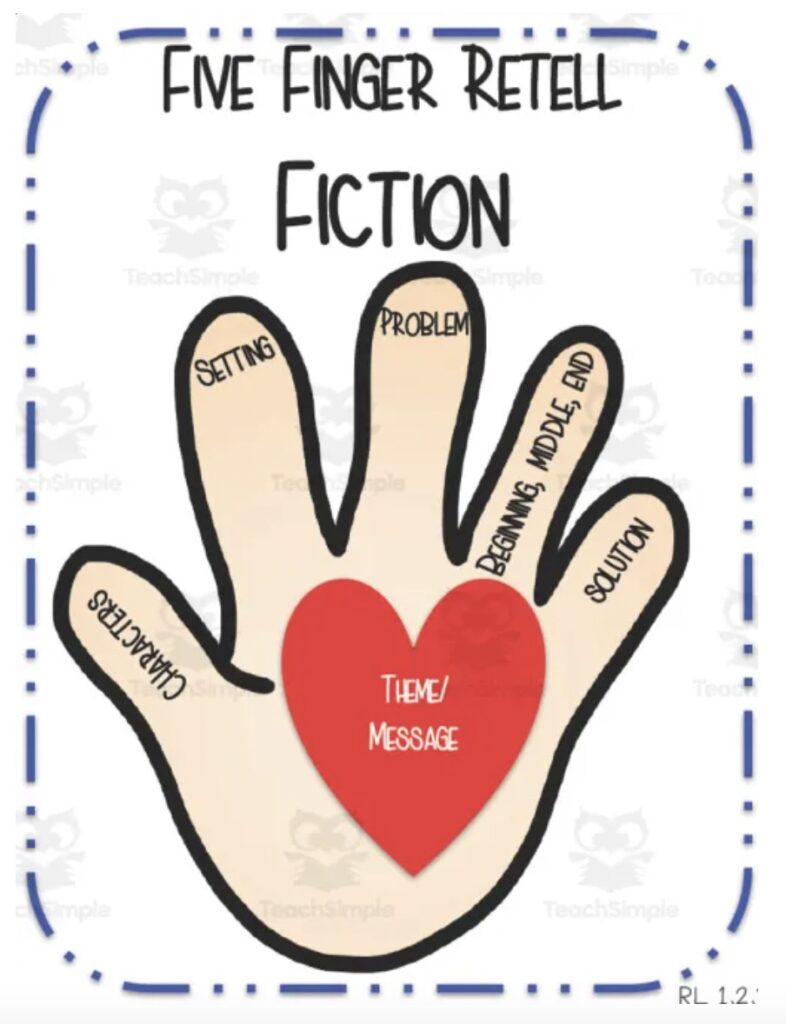
Fiction and Nonfiction Genre Charts
This resource is about Fiction and Nonfiction Genre charts. The chart indicates different genres and gives a description of each. The last column is for examples of each genre. This is where the students and their experience and observations will contribute. The students can enter examples of any text they know and which will fit into the genre.


Setting fiction against nonfiction
This resource is about the similarities and differences between fiction and nonfiction. The shorthand way the notes are written will make it easy for the students to understand. This anchor chart is a great reference for the students to do an activity where they categorize texts based on what they observe about each.
The main genres
If you are looking for a more formal layout of the differences between fiction and nonfiction, this is a great chart to use. Teachers find the simple wording of each point easy for the students to understand. There are also useful examples. You can recreate the chart and leave the example boxes empty, so the students can fill them in.
Creating an anchor chart with pictures
A picture is truly worth a whole lot of words in this nonfiction vs fiction books anchor chart. This chart has a simple layout that puts the two types of books against each other. I like the absence of columns and the use of the ‘cloud’. Common subjects are used, with a picture showing a fiction book and a non-fiction book on each subject. This makes a clear contrast.
Putting things together
This anchor chart on literature vs informational texts is the perfect inspiration for a sort of ‘build it’ anchor chart. You can see the different features on separate strips. Work with the class to build the anchor chart. It would be very effective if the students work from actual books or other texts to find the features.
Going beyond fiction and nonfiction
This anchor chart on Reading Genres takes the student beyond fiction and nonfiction as the main types of text. It looks at the different genres of fiction and then includes nonfiction texts. It would be a good chart to use in the upper grades, when the students have been exposed to fiction vs nonfiction and understand the concept of genre clearly.
Looking at fiction
This resource is about the characteristic fiction story elements. It will need to be used in conjunction with a similar chart of the elements of nonfiction texts. The layout is unusual, because it uses the spray diagram. It is not a comparison, so the format is appropriate. You could create a similar chart about nonfiction texts, which you can place next to this one.
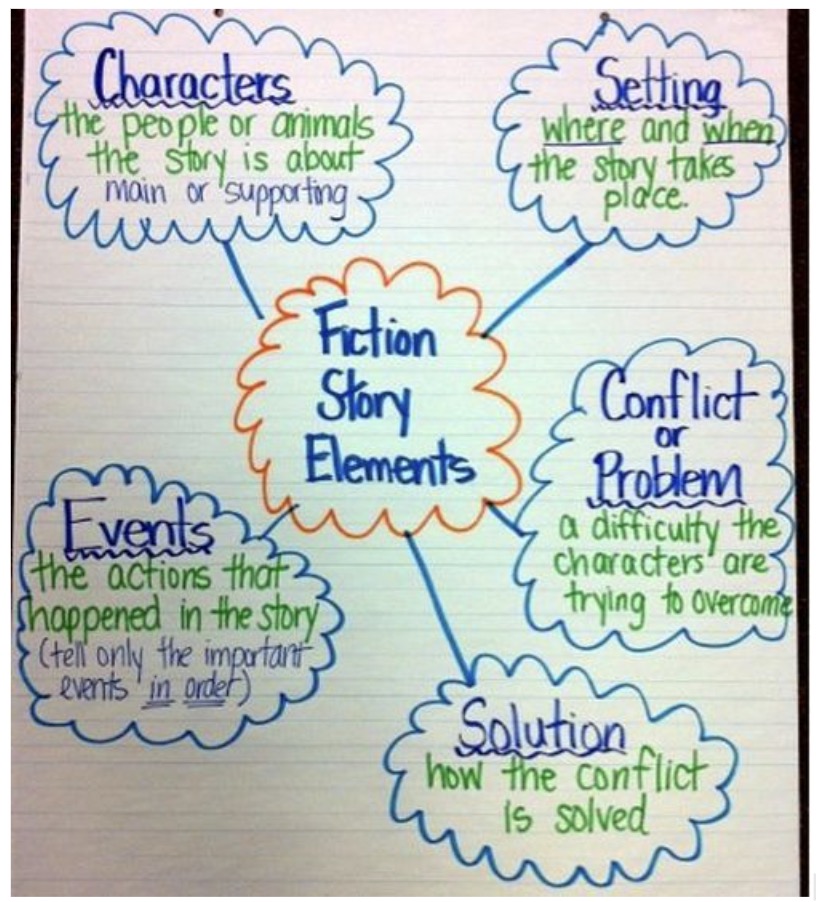
Stick ‘n stay
This anchor chart looks at fiction (literature) vs nonfiction (informational). It is completely interactive, as the features of the two types of text are written on separate strips of paper and stuck to the chart. You can use this as part of a class activity, or the students can fill in the columns in groups. The chart will be useful for revision, or for doing a fun pop quiz with the class.
Using color to build an anchor chart
This idea is similar to the previous chart, as it builds a fiction vs nonfiction anchor chart. The characteristics are on different colored paper, which makes the matching of the opposite elements easier. This would work well with lower grades. One caution is that not all fiction is fantasy, but that is something you can rework.
Put the genres in sets
This resource takes a different slant on the genre, using the intersection between fiction and nonfiction. Instead of using columns or a geometric approach, this anchor chart creates circles for each genre. It shows clearly that the types of writing are not only different, there are some commonalities. This will give students a different way to look at the comparison.
Ideas for creating fiction vs nonfiction anchor charts
Looking at responses to reading fiction
A Literate Life offers ideas for, and examples of, anchor charts to do with fiction, non-fiction and fiction vs nonfiction.
This chart on Fiction reading response is useful as a way of helping students to understand their responses to fiction writing. It will need to be used in conjunction with an anchor chart on reading nonfiction texts. It presents a great opportunity for you to work with students (particularly in the higher grades) on the elements of the two types of text and how that causes us to respond in different ways to each of them.
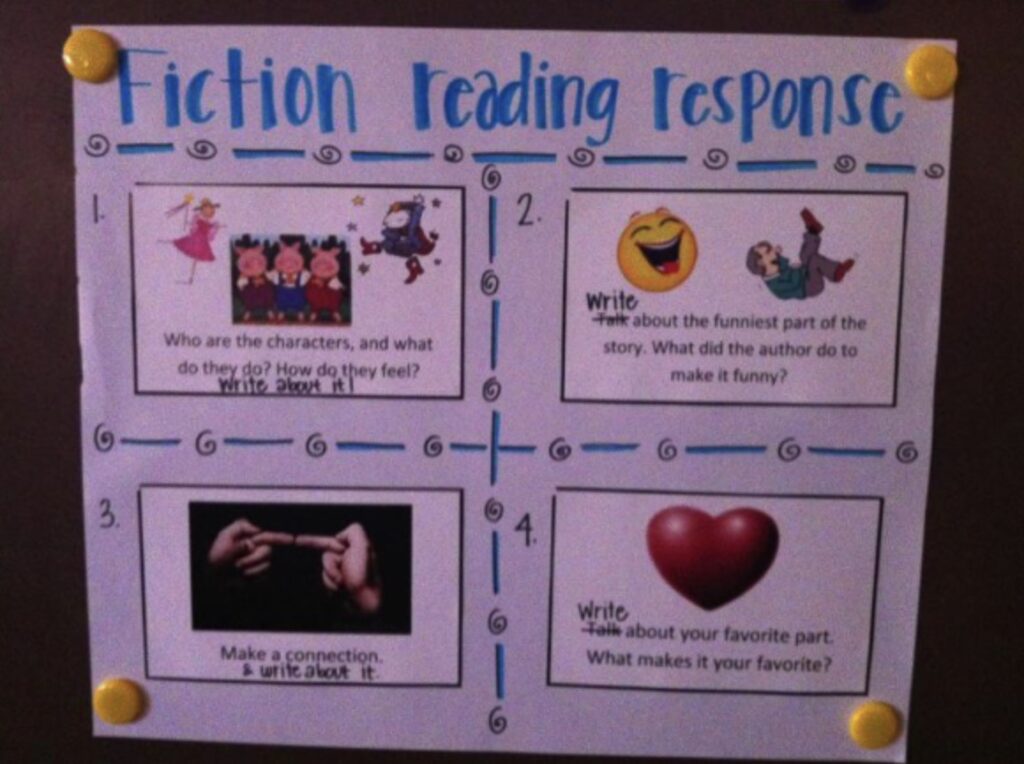
Considering nonfiction writing
A Teacher and Technology writes a blog post about Research in Kindergarten, which features some ideas for anchor charts. This one shows students what elements to expect in a nonfiction book. It uses colors, images and fonts effectively. I think it would be a little more effective if the descriptive words were ordered in some way. It is a great overall introduction and could be used with higher grades too.
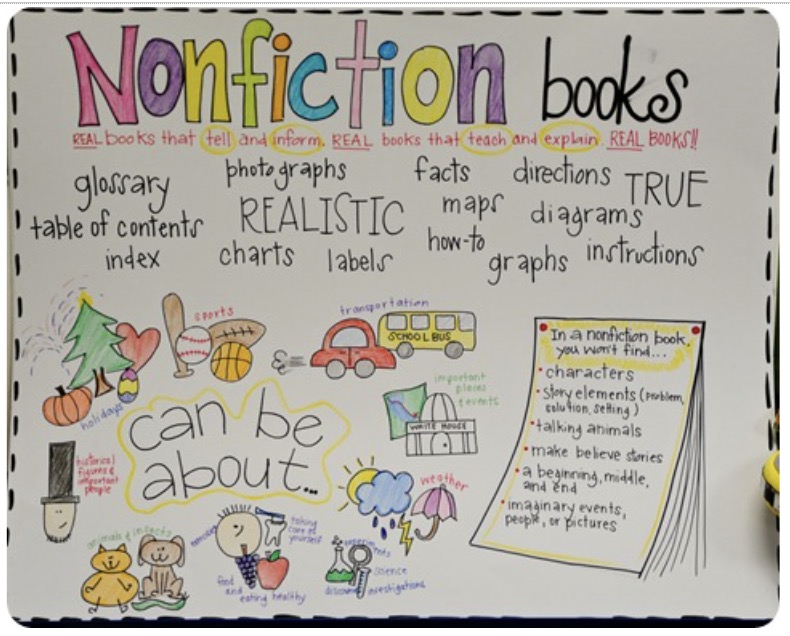
Resources from a teacher
Learning Adventures with Mrs Gerlach features a blog with some ideas about teaching, including anchor charts.
This chart is quite a comprehensive look at different types of nonfiction texts. It is suitable for middle grades, but can be adapted for higher grades. The use of color and organization helps to communicate information. This is an anchor chart you can work up with your class.
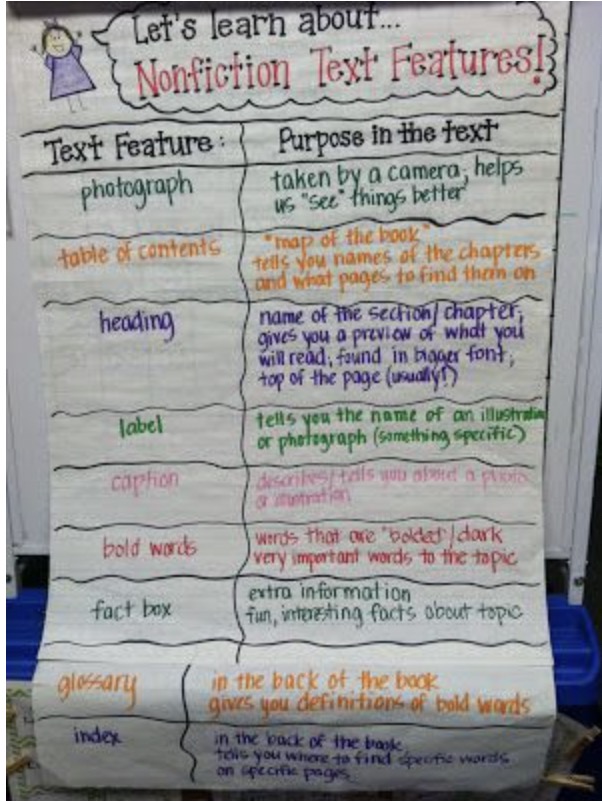
Putting it all together
This Fiction vs Nonfiction mini unit is an absolute treasure. The resource consists of 7 PDF pages. There are anchor charts explaining fiction and nonfiction, as well as working pages the students can fill in. What is really valuable is the way the two genres are broken up and then brought together in comparison.
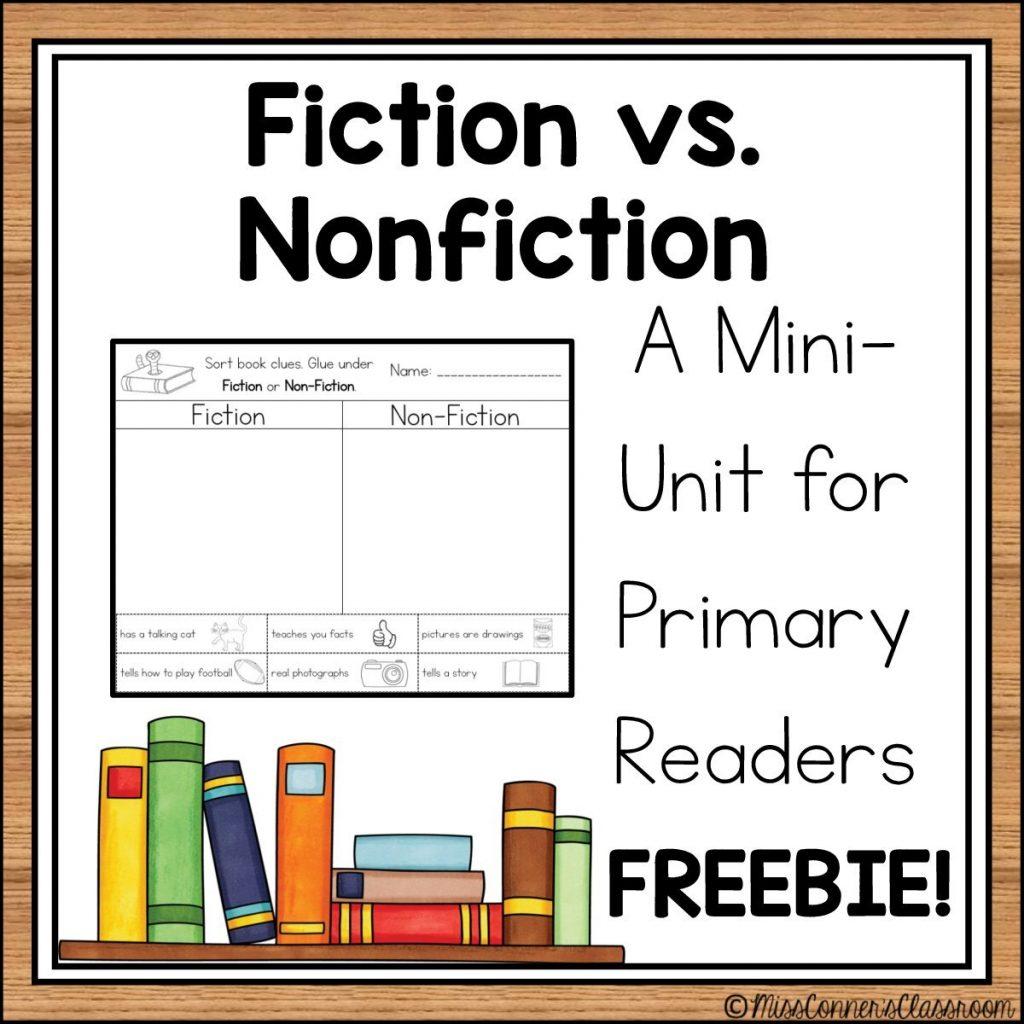
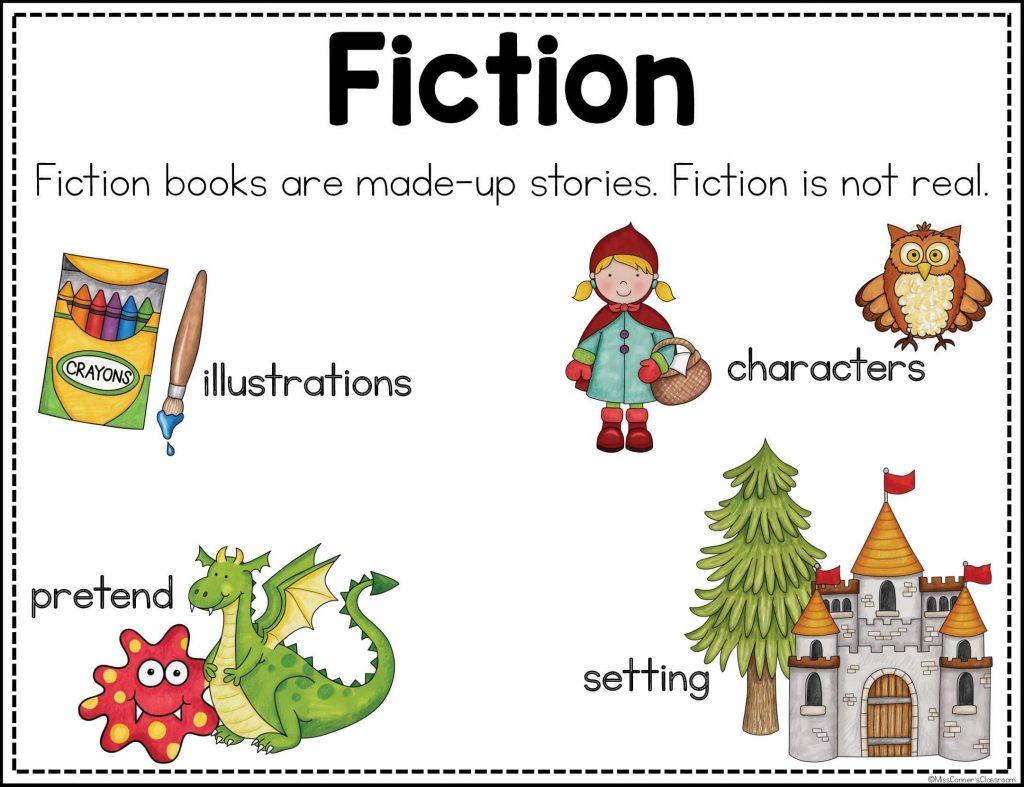

Final thoughts on fiction vs nonfiction anchor charts
After reading this post, you’ll have a useful set of fiction vs nonfiction anchor charts to use. You can also refer to some of the ideas when you create your own charts.
